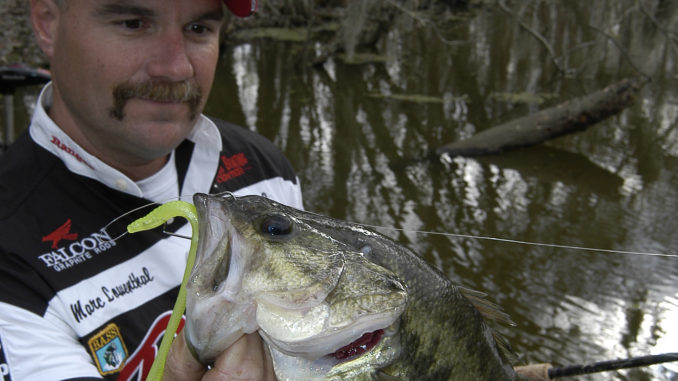
A plurality of anglers surveyed about current bass regulations for the Atchafalaya Basin, Henderson Lake, and the Lake Verret, Grassy Lake and Lake Palourde system said they supported the 14-inch minimum size limit, according to a study just released by the Louisiana Department of Wildlife and Fisheries.
The study included surveys sent to 2,000 recreational anglers living within 60 miles of the Atchafalaya Basin. LDWF records show 38.1 percent of those surveyed responded.
It is worth noting that only 15 percent of those who responded to a question about participation in fishing tournaments said they were tournament anglers. Also, only 2.7 percent said they were bass-club members.
The full report can be viewed here.
A tad more than 50 percent of respondents said they were in favor of keeping the current 10-fish bag limit for bass within the Basin. Only 7.6 percent said they would like to see the daily bag lowered, while nearly 10 percent wanted it increased. Another 30.8 percent had no opinion.
The results were even more supportive of the current bag limit among those who said they fished the Atchafalya Basin, with nearly 61 percent supporting. Another 11.8 percent wanted to lower the limit, and 12.2 percent wanted to increase it. Only 13.1 percent had no opinion.
Support of the 14-inch minimum-size limit within the Basin levees was not as overwhelming, however, with just less than 27 percent of respondents supporting the current regulation.
At the same time, nearly 15 percent wanted to decrease the size limit, and 7 ½ percent wanted no size limit at all. Another 9.8 percent called for a slot limit.
An even 38 percent had no opinion.
There was a bit more support for the 14-inch minimum among anglers who said they fished the Basin, with nearly 31 percent supporting the current plan.
However, just more than 24 percent of Basin anglers involved in the survey said they would like to decrease the size limit. And 9 ½ percent said they wanted no size limit.
Another 13.4 percent said they would support a slot limit.
For Henderson Lake, those who expressed an opinion about the bag limit overwhelmingly supported the current regulations, with 45.4 percent of all respondents and nearly 55 percent who identified themselves as Henderson Lake anglers wanting to keep the 10-fish bag.
Just less than 15 percent want a lower limit, while almost 13 percent called for an increased limit.
Nearly 27 percent of those responding to the survey said they liked the 14-inch minimum size limit, and 12 percent said they would like it decreased. Nine percent would like to see a slot limit, and 6 percent wanted no minimum size restriction.
Of Henderson Lake anglers, support for the current bag limit moved upward to nearly 36 percent. However, just more than 18 percent would like to decrease the size limit, and 12 percent would like to see a slot.
And nearly 11 percent of Henderson anglers wanted no size limit.
For the Lake Verret system, 45 percent of all respondents and just more than 58 percent of those respondents who fished Lake Verret supported the current bag limit.
Only 7 percent of respondents called for a decrease in the bag limit, but 11 ½ percent of Lake Verret anglers wanted to decrease the number of bass that could be kept.
Almost 26 percent of respondents thought the 14-inch size restriction was a good thing, with just more than 13 percent wanting to see the restriction decreased. Nearly 8 percent wanted a slot limit.
Just less than 7 percent of respondents wanted to remove the size limit altogether.
When looking at only those anglers who fish the Lake Verret system, however, it was almost evenly split between those favoring the current size limit and those wanting to see it decreased.
Just shy of 26 percent supported the status quo, while nearly 23 percent wanted to be able to keep smaller fish.
Another 13.6 percent wanted no size limit on the system, while 13.6 percent of Lake Verret anglers wanted a slot limit.
Go here to read how the LDWF plans to use this study.